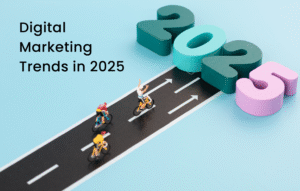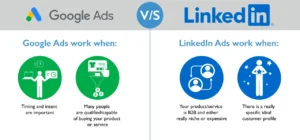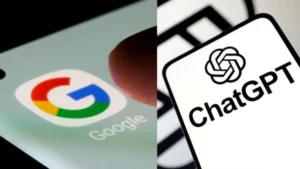The marketing world is constantly changing and in this fast-paced landscape, staying relevant and informed is essential so you don’t miss out. In a world where people are becoming impatient and screens are getting smaller, mobile marketing has emerged as a game-changer for businesses that want to meet their customers right where they are: on their phones.
Whether you’re a business owner, digital marketer, or curious learner, this blog will help you understand why mobile marketing is in demand, what strategies and trends are driving its growth in 2025, and how to adopt the right techniques to benefit your brand.
In this blog, we’ll break down the core of mobile marketing and explore why it’s becoming an essential strategy in 2025. We’ll cover what mobile marketing really is, the trends shaping its rise, how businesses can benefit from it, and the most effective techniques to implement.
WHAT EXACTLY IS MOBILE MARKETING?
Mobile marketing refers to any advertising activity that promotes products or services via mobile devices like smartphones and tablets. It includes SMS marketing, in-app advertising, mobile-friendly websites, push notifications, and even QR codes. The goal? Reach your customer anytime, anywhere.
With over 7 billion mobile users globally, mobile has become the first screen, not the second. According to a recent Statista report, over 60% of web traffic now comes from mobile devices- which clearly shows why mobile marketing is in demand more than ever before.
MOBILE MARKETING TRENDS 2025-
Let’s take a look at some of the top mobile marketing trends shaping 2025:
1. More Shopping on Mobile Devices-
E-commerce is no longer desktop-first. Mobile commerce is booming with platforms like Flipkart, and Amazon optimizing their apps for easy in-app purchases. According to eMarketer, over 72% of e-commerce sales in 2025 will happen on mobile devices.
2. The Growth of 5G-
With 5G networks expanding, mobile users are getting faster load times, smoother video playback, and richer interactive experiences. For marketers, this means it’s time to go beyond static ads and experiment with AR, VR, and immersive mobile experiences.
3. More Video Content-
Short-form video is the king of content thanks to platforms like TikTok, YouTube Shorts, and Instagram Reels. Video content consumption is expected to make up over 80% of all mobile traffic by the end of 2025. That’s a powerful reason to optimize your video marketing for mobile screens.
4. Location-Based Targeting-
With mobile GPS and geofencing tools, brands can send personalized offers based on a user’s real-time location. Think about Starbucks sending you a discount alert just as you walk past one of their outlets that’s the power of location-based mobile marketing!
HOW TO TAKE ADVANTAGE OF MOBILE MARKETING?
To fully leverage mobile marketing, brands need to think mobile-first,not just mobile-friendly. This means designing every aspect of your digital strategy to be optimized for mobile device users. Start with your website: it should load quickly, be responsive to all screen sizes, and provide a seamless user experience. Google’s mobile-first indexing makes this non-negotiable.
Next, understand your audience’s mobile behaviour. Are they checking emails during commute hours? Are they more responsive to SMS alerts in the evening? Use analytics tools to track mobile engagement and time your campaigns accordingly.
Leverage personalization and real-time communication. Mobile users expect tailored experiences. Use behavioural data to send personalized push notifications, SMS offers, or email campaigns. Incorporate click-to-call buttons, location maps, and easy checkout features in your mobile interface to drive conversions.
Integrate with social media platforms, where mobile usage dominates. Platforms like Instagram, TikTok, and YouTube Shorts allow you to promote your brand through bite-sized, engaging content that performs well on mobile devices. Finally, always test your campaigns across devices and operating systems to ensure consistent delivery and experience.
TECHNIQUES OF MOBILE MARKETING-
- SMS Marketing-
Short, direct, and personal SMS remains one of the highest open-rate marketing tools. Use it to send time-sensitive offers, reminders, and alerts. - Push Notifications-
These are great for re-engaging app users. You can deliver updates, personalized offers, or reminders at the right moment, increasing user retention. - In-App Advertising-
Place targeted ads within apps your audience uses regularly. This offers a less disruptive user experience and can be extremely effective when paired with strong visuals. - Mobile-Friendly Email Campaigns-
Design responsive email templates that load properly on smaller screens and use concise, engaging subject lines to boost open rates.
OVERCOMING MOBILE MARKETING CHALLENGES-
- Privacy & Data Protection-
With rising concerns over digital privacy, brands must be transparent in how they collect and use user data. Comply with GDPR, CCPA, and other local regulations. Give users clear opt-in/opt-out options and never misuse personal data.
- Ad Fatigue & Intrusiveness-
Bombarding users with too many notifications or ads can lead to app uninstalls and lost trust. Use frequency capping, segment your audience, and ensure every message provides value whether it’s an exclusive deal or useful update.
- Device & Platform Fragmentation-
With a wide range of screen sizes, OS versions, and app environments, testing is critical. Use mobile testing tools like BrowserStack, TestGrid, or Firebase Test Lab to ensure your content performs well across all devices.
- Limited Attention Span-
Mobile users scroll fast and bounce even faster. Use eye-catching visuals, short videos, and powerful CTAs to grab attention quickly. Keep content concise, and prioritize clarity over creativity in copy.
- Technical Limitations-
Mobile networks may be slower or unstable in certain regions. Optimize your content to load quickly with compressed images, minimal redirects, and clean code.
FAQS-
Q: Is mobile marketing only for big brands?
-Not at all. Mobile marketing can benefit small local businesses just as much, especially through WhatsApp, Google Maps listings, and SMS campaigns.
Q: Is mobile advertising expensive?
-It depends on the format. SMS and push notifications are cost-effective, while in-app ads and video campaigns can vary based on reach.
Q: What is the future of mobile marketing?
-It’s heading toward hyper-personalization, AI-driven content, and integrated experiences across devices.
CONCLUSION-
To sum it up, mobile marketing is in demand because it connects brands to customers at the most personal level on their phones. As we move into a mobile-first (and often mobile-only) future, businesses that embrace the latest mobile marketing strategies and trends will stand out, convert better, and build long-term loyalty.
At SOCIAL MATTERS-best marketing agency in hyderabad, we provide services from Social Media marketing, SEO marketing, Graphic Designing, Content writing and marketing, Website Development, Photography and Videography, and many more. Contact us now!
FOLLOW US ON INSTAGRAM!








